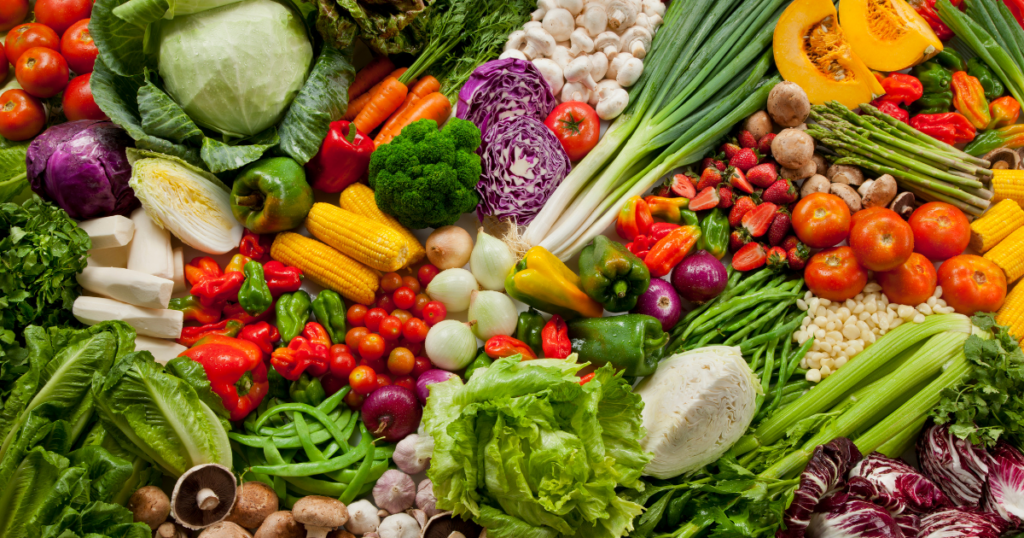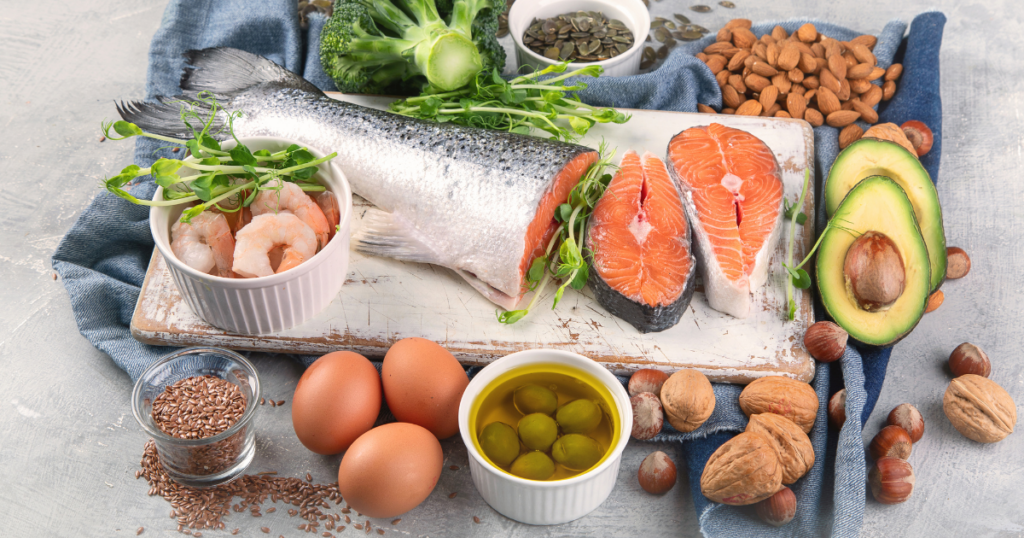Browse around
topics
Hey!
REGISTERED DIETITIAN & HEALTH ADVOCATE.
I'm Kat
Book a free call with me to learn more about how I can help you improve your relationship with food and stress less about nutrition!
Maple Butter Salmon
RECIPES
4 Nutrients That Slow Skin Aging
NUTRITION
Nutrition for Migraine
NUTRITION
Apple Cider and Ginger Mocktail
RECIPES
1:1 Nutrition
Are you looking for an expert registered dietitian in West MI? Learn more about my virtual counseling services!
Migraine is a neurological condition that has been estimated to affect over a billion people globally.
The symptoms of migraine can greatly affect the quality of someone’s life, leading patients to seek out treatments that alleviate symptoms.
What you eat is one way to fight back against migraine.
In today’s blog post, I explore some of the dietary strategies that could help mitigate either the onset or symptoms of migraine.
I had the opportunity to write this article for my past mentor, Andy De Santis’s website. He was kind enough to let me publish it on my website, too.
Strategy #1 – More Dietary Folate

Folate, or vitamin B9, is an essential B vitamin we must obtain through our diet and is commonly known for its role in DNA synthesis and cellular metabolism.
The relationship between migraine and folate appears to likely be due to folate’s ability to lower an amino acid in our blood called homocysteine, which is relevant because high levels of homocysteine are reported to be a potential risk factor for migraine attacks.
A 2016 study out of the journal of Advanced Biomedical Research found that migraine patients had a significantly lower intake of dietary folate compared to non-migraine patients, even though their overall energy intake was the same.
An even deeper look into the connection between migraine and folate showcases a common denominator between migraine occurrence and folate metabolism within our body- a specific gene called the methylenetetrahydrofolate reductase gene or MTHFR gene.
A deficiency in folate coupled with a mutated MTHFR C677T gene can cause even greater deviance in DNA methylation, which evidence has shown may contribute to an increase in migraine frequency.
Therefore, the current science suggests that migraine patients with a variant MTHFR gene might reap even more benefits from raising their folate levels, such as this 2015 RCT out of the journal Headache that concluded migraine frequency was significantly linked to folate consumption in individuals with the MTHFR gene variant.
A genetic test for the MTHFR gene and/or checking your homocysteine levels may be an appropriate next course of action, especially if you have other conditions associated with the MTHFR gene mutation, such as infertility, bipolar disorder, cardiovascular diseases, and colon cancer.
While more research needs to be conducted on this intricate process, incorporating high-folate foods into your diet, such as:
Dark leafy greens, edamame, mango, broccoli, asparagus, nuts, and legumes (lentils,chickpeas) are a seemingly low-risk dietary strategy for migraine patients to keep in mind.
Strategy #2 – Trigger Food Awareness
“Trigger foods” is a phrase used to characterize certain foods that have been reported to provoke migraine attacks in either a general population of migraine patients or on an individualized basis.
Recent literature defines a food as a potential trigger if a headache occurs in more than 50% of instances within 12-24 hours of eating that food.
How trigger foods specifically interact with migraine pathogenesis is still largely unknown and differs amongst food groups, but the current literature infers that the complex link has to do with meningeal inflammation, vasodilation, and cerebral glucose metabolism.
The available evidence on migraine food triggers is primarily anecdotal, however, one randomized trial found that migraine patients saw a significant decrease in attack frequency, severity, and duration after eliminating potential dietary trigger foods for four months.
And while an overarching goal of identifying your own personal triggers seems applicable, a logical starting place would be limiting/cutting out foods that research has shown are a possible migraine trigger among a large portion of migraine patients.
A 2020 systematic literature review out of the Journal of Head and Face Pain identified this non-exhaustive list of common trigger foods:
- Alcohol (especially red wine)
- Caffeine
- Chocolate (although this study says otherwise)
- Cheese
- Processed meats
- Monosodium glutamate
- Aspartame
- Fatty & fried foods
It is important for me to note that due to the complicated and non-linear relationship between food triggers and migraine, it is not a simple case of cause-and-effect.
Therefore, it is possible to have multiple (or even no) food triggers, and a diet recall strategy is often advised, such as a comprehensive food diary to help record & recognize specific triggers as they appear.
If this concept seems daunting and you are apprehensive about doing it on your own, don’t hesitate to reach out to a registered dietitian!
Strategy #3 – Omega-3 Fatty Acids

An appropriate dietary intake ratio of essential fatty acids alpha-linolenic acid (omega-3) and linoleic acid (omega-6) has been shown to be beneficial for optimal health in a variety of areas.
While the typical Western diet is high in omega-6 fatty acids and low in omega-3, this can be especially problematic for migraine patients on account of how fatty acids regulate pain-related biochemical pathways in our body.
It has been shown that lipid meditators derived from omega-6 fatty acids have pronociceptive properties (processing pain), while omega-3 fatty acids have antinociceptive properties (blocking pain).
Due to this, ensuring migraine patients have a high omega-3 to omega-6 ratio (about 4:1) through dietary interventions may be beneficial in reducing unwanted migraine pain.
A 2013 randomized controlled trial published in the journal Pain saw a significant improvement in headache frequency & severity, as well as quality of life, with a 12-week diet intervention high in omega-3 fatty acids and low in omega-6.
In order to ensure an adequate balance, it is recommended to incorporate foods with a high amount of omega-3s, such as flax, chia, hemp, salmon, sardines, trout, walnuts, and soy.
The Takeaway
Today’s blog post represents some of the best available literature in the realm of migraine prevention and management.
If you’re looking for extra support and guidance with your migraine, book a free discovery with me today!
View the full original article on Andy’s website here.
Pin
Share
Leave a Reply Cancel reply
Previous Story
next Story
© 2023 Kathryn Durston, RDN. Site by Sugar Studios
Get the free guide download straight to your inbox!
5 Easy Tips for Relieving Stress Around Food
Join Me on Insta
I'm so glad to have you here. Take a deep breath and look around!
